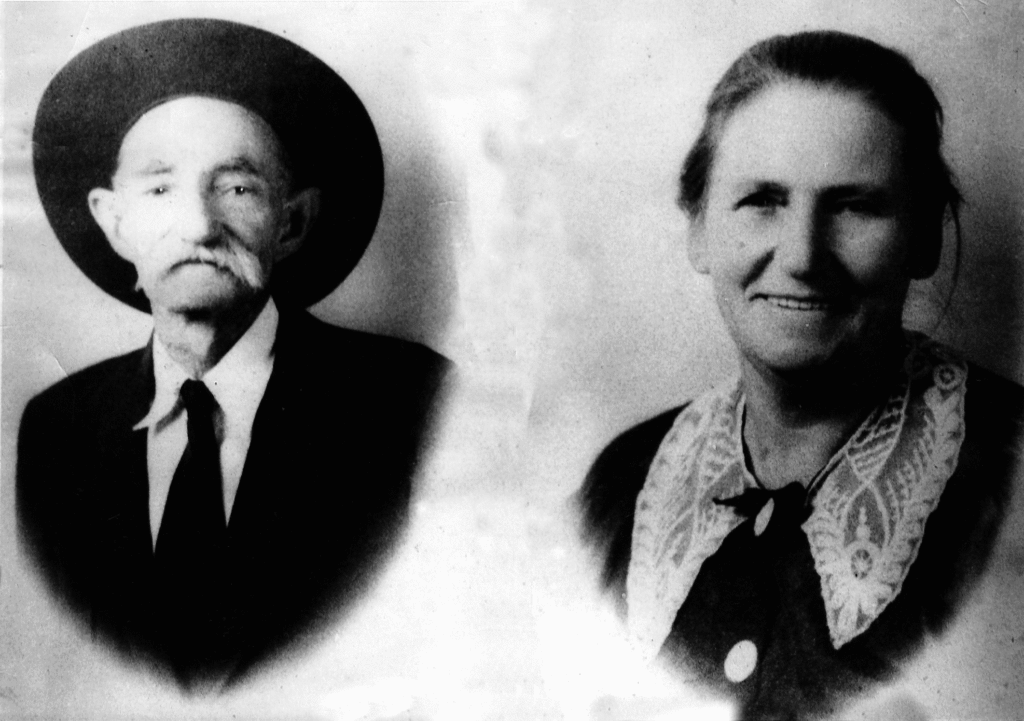
Andale Joseph Thibodeaux and Mary Z. Pepper
William J. Thibodeaux is a former resident of Rayne, La. and now resides in Lafayette, La. with Elaine, his wife of 30 years. Andale and Mary (Pepper) Thibodeaux were his paternal grandparents.
Andale Thibodeaux and his wife, Mary, were sharecroppers. They lived west of Rayne, La. and just south of La. Hwy 90. They had 11 children, all but 3 lived with them; the others were married and on their own.
The evening of Tuesday, August 6, 1940, Andale (pronounced Au-de-ohl) noticed an ominous bank of dark clouds in the sky, as a light mist fell. During the night the wind started blowing harder, as the mist turned into a deluge of water.
The following day the rain continued pounding relentlessly. Andale said it was a Louragan, (hurricane) which occasionally frequented the gulf coast states. Rain fell 20 in a 24-hour period and another 20 fell during 4 days of non-stop rain.
Andale kept a close watch for raising water. He tried sleep, but was restless as he anticipated the inevitable flooding. It finally came on the evening of the 3rd night.
The year was unusually wet; the ground was saturated, as bayous and canals were overflowing with water. There was no place for the water to go, but up.
Most of southwest Louisiana was inundated with water for 6 days. Trains were used to evacuate thousands of flooded victims to refugee camps in Lafayette and Baton Rouge. Trains also carried food and supplies for the needy. In spite of the flooding, most chose to stay in order to get a quick start on repairs and cleaning.
The cities and town’s businesses were paralyzed due to flooding. The only mode of transportation was by small boat, until the water receded enough to use horse and buggy. Nearly all of the automobiles were flooded. Acadia Parish schools were closed an additional 2 weeks due to flooding and wind damage.
Fortunately, no human deaths were attributed to the flooding, but an estimated 50,000 animals drowned or died of starvation during the ordeal.
After the rain and flooding, the scorching, hot and humid August sun didn’t help the nauseating and omnipresent smell of the dead animals mixed with decaying vegetation.
Thousands of pounds of lime were used to spread over the dead animals in an effort to curb the smell. Most of the carcasses were later gathered and burned.
The parish health officials issued warnings about drinking surface water or water from shallow wells until it was sterilized, or disinfected by the use of chloride and boiling the water before consumption. The doctors also urged vaccination against Typhoid fever.
Once the removal of mud, water and debris from homes and businesses were removed and cleaned; some of the wood floorings and walls buckled after drying and had to be replaced.
The majority of the people didn’t have insurance, but they were thankful for the generous help and offering by friends and neighbors from cities and states across the country with money, food and clothing. They just wanted to get their lives back as quickly as possible.
Andale didn’t loose any animals during the flood. The animals survived by standing on the raised bank of a drainage canal, located on the far end of the farm. Some of the animals legs were swollen from standing in water for such a long period of time, and unable to move.
The cotton and rice crop weren’t so lucky; they were nearly totally devastated.
People compare the flood of 1927 to the flood of 1940. The flood of 1927 rained for 3 days and the amount of rainfall was measured at 13.49 inches. What made the flood of 1927 worse were the levee breaks.
The flood of 1940 brought out a popular joke from the flood of 1927. A rescue worker sees a young man in waist high water, walking towards a railcar.
“Are you a refugee?” asked the rescue worker.
“Mais non, (Well no) I’m a Courville,” said the young man.
